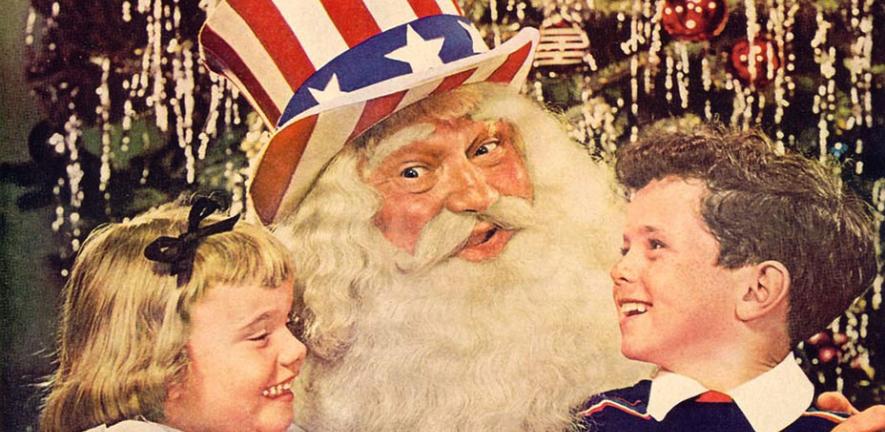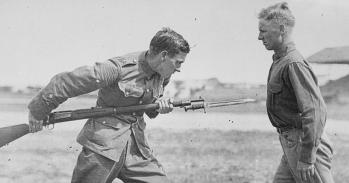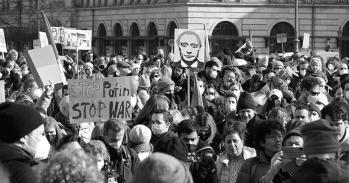
The persuasive powers of Cold War PR, until now little recognised or discussed, was the subject of a three-day conference at Cambridge University.
The persuasive powers of Cold War PR, until now little recognised or discussed, was the subject of a three-day conference at Cambridge University.
This conference spurred a vital conversation about the channels and means by which governments ‘sold’ the Cold War to their own people - and how journalists, movie-makers, academics, researchers and the general public took up the ideological battle of their own volition.
Hannah Higgin
Public Relations of the Cold War, organised by CRASSH (Centre for Research in the Arts, Social Sciences and Humanities) sought to examine the ‘selling’ of ideologically motivated policies to domestic audiences during the Cold War – outside of the more commonly studied area of public diplomacy, which concerns a government reaching out to foreign audiences.
The conference, which drew experts from the UK, Europe, and North America and featured keynote addresses from Professor Christopher Andrew, Official Historian of the Security Service, and Professor Odd Arne Westad, a leading expert in Cold War history, aimed to demonstrate how pervasive the battle to influence domestic public opinion became – on both sides of the Cold War divide.
The scope of influence was massive, whether it was Executive Branch infighting about how to best present casualty reports to the public during the Vietnam War to models of Inter-Continental Ballistic Missiles (ICBMs) on sale in children’s toyshops. The conference also examined the under-recognized and -examined nuance in various means of disseminating PR.
American historian Hannah Higgin, one of the conference organisers, said: “In today’s PR-laden world, there are very important lessons to be learned by looking at how public relations influenced opinion, occupied governments and seeped into daily life and popular culture.
“And this wasn’t just practised by the USSR and USA. The conference has speakers discussing just how neutral Switzerland actually was, how Maoist thought and even the singing of ‘The East is Red’ were among surgeon’s tools in China after the Sino-Soviet split, West Germany’s ‘reptile fund’ and how the work of George Orwell, via the medium of radio, was possibly as potent, if not a more potent, a weapon in the battle against Soviet totalitarianism as any CIA-funded or covertly-backed Cold War cultural enterprise abroad.
“This conference spurred a vital conversation about the channels and means by which governments ‘sold’ the Cold War to their own people - and how journalists, movie-makers, academics, researchers and the general public took up the ideological battle of their own volition.”
The conference considered a range of controversial issues, including the Soviet intervention in Afghanistan and the USA’s reporting of combat casualties in both the Vietnam and Korean Wars, and dissected how official policy was transmitted through the mass media.
In the latter case, the media often challenged official casualty statistics, charging that they underreported the actual total. In response, the Pentagon increasingly provided more detailed figures, to the consternation of Truman and particularly Johnson.
In the Soviet Union, the Brezhnev-era of tightly controlled reporting of the 'events' in Afghanistan gave way to the gradual liberalisation of media policy. Under glasnost, the dynamics of public debate could not be controlled by official institutions anymore and contributed to the eventual collapse of the Soviet Union.
Also up for discussion was the selling of the Cold War via the media by America’s ‘Crusade for Freedom’. Developed by the CIA, the Crusade was one of the longest-running and most intensive campaigns which saturated the American media with anti-communist sentiment for two decades.
The paper, presented by Dr Ken Osgood from the Colorado School of Mines, looked at how such sentiment seeped effortlessly into art, literature, movies, music and politics. The Crusade had a particularly wide reach because of the extensive support it received from public relations professionals and the Advertising Council, as well celebrities—including, in one advert, a young Ronald Reagan, corporations and the mass media.
Added Higgin: “America’s battle against Communism touched everyday life through overt and covert means. Whether it was through ‘duck and cover’ (the famous public safety campaign) or Edward R Murrow, one of America’s most respected journalists, becoming the Director of the United States Information Agency in 1961, American culture was filled with subtle and not so subtle messages about how high the ideological stakes were.
“The PR aspect of the Cold War has not been discussed in great depth before. Often domestic and foreign realms of history are studied in relative isolation. Further, people were living with Cold War PR until relatively recently. Now there is some historical distance. We need to understand more about what constitutes domestic PR, how it was—and is—disseminated, and how it was used as means of uniting—or trying to unite—the masses to a common purpose, and when and whether it is good, bad, or something else, for society.”
The conference was funded by CRASSH as well as by the International History Dept at LSE and the History Faculty at Cambridge. The conveners of the conference were PhD students Hannah Higgin (History, Cambridge), Martin Albers (History, Cambridge), Mark Miller (History, Cambridge), and Zhong Zhong Chen (LSE).
This work is licensed under a Creative Commons Licence. If you use this content on your site please link back to this page.





